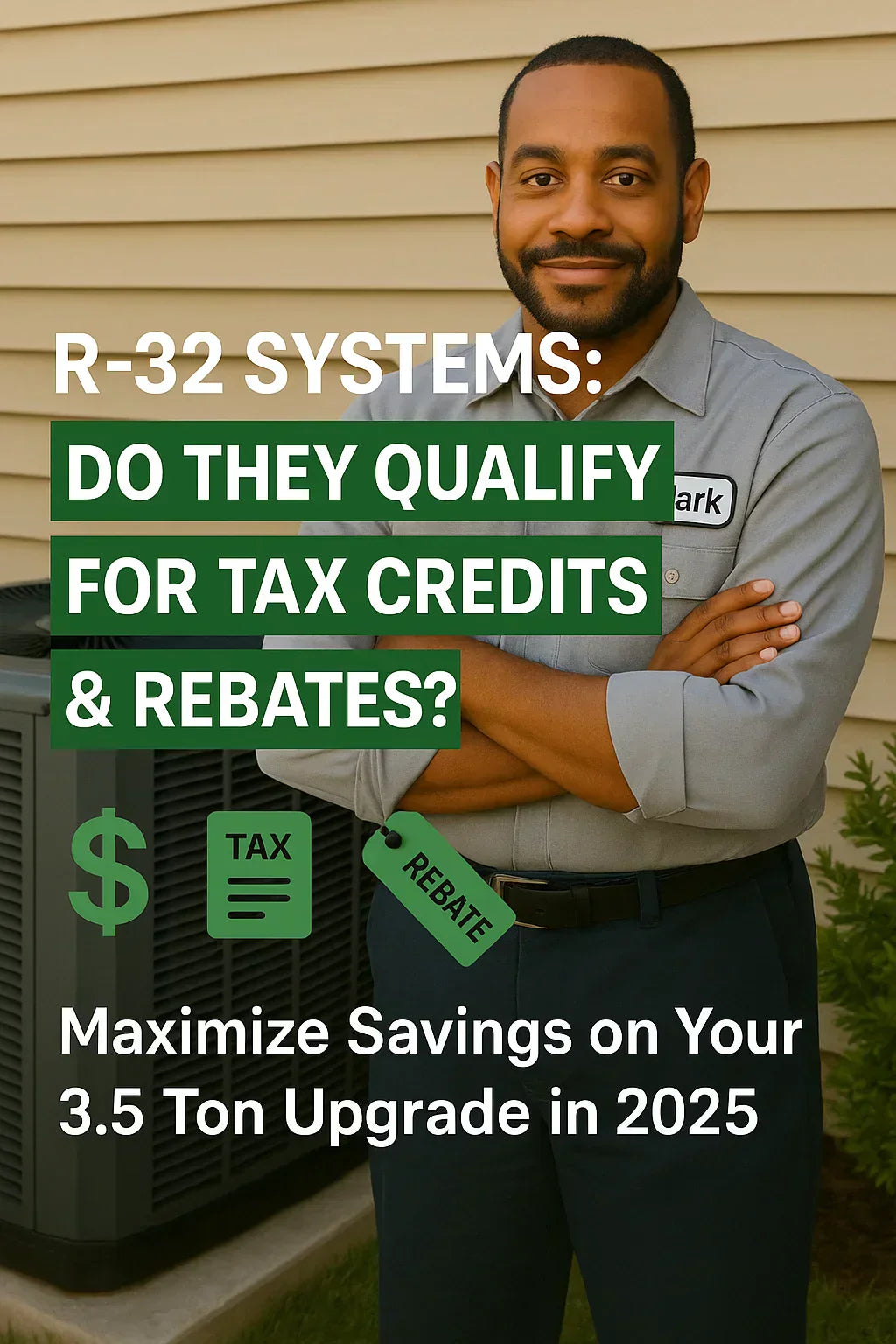📌 Introduction
If you’re considering a 3.5 Ton R-32 AC system, you may be eligible for tax credits, rebates, and incentives that significantly reduce your upfront costs.
This guide covers:
-
Federal tax credits for R-32 systems
-
State and utility rebates in 2025
-
ENERGY STAR and SEER2 qualification requirements
-
How to apply for rebates and credits
-
Real-world savings examples
By the end, you will know how to maximize your savings when installing your R-32 system.
🌿 Why Incentives Exist for R-32 Systems
✅ R-32 has a lower Global Warming Potential (GWP 675 vs. R-410A’s 2,088).
✅ R-32 systems often feature higher SEER2 ratings, reducing energy consumption.
✅ Supporting low-GWP refrigerants aligns with EPA AIM Act phasedown goals.
✅ Many programs encourage homeowners to switch to efficient systems to reduce grid demand.
See EPA’s refrigerant transition information for context. ✅
💰 Federal Tax Credits (2025)
Under the Inflation Reduction Act (IRA), homeowners may qualify for:
✅ Up to 30% of total project costs (equipment + labor) back as a federal tax credit.
✅ Maximum of $2,000 per year for qualifying heat pumps and AC systems.
✅ Systems must meet specific efficiency requirements (typically ENERGY STAR certified).
Tax credits apply when you file your annual return. Always consult a tax professional for your specific situation.
See ENERGY STAR’s federal tax credit resource for updates. ✅
🗺️ State and Utility Rebates
Most states and many local utilities offer rebates for high-efficiency HVAC systems:
✅ Rebates typically range from $200 to $1,500 or more.
✅ Requirements may include ENERGY STAR certification or SEER2 minimum ratings.
✅ Some utilities provide low-interest financing for efficiency upgrades.
Check your state and utility programs at DSIRE. ✅
⭐ ENERGY STAR and SEER2 Requirements
To qualify for many incentives:
✅ Your system often must be ENERGY STAR certified.
✅ SEER2 ratings typically must meet or exceed 15.2 SEER2 for central AC and heat pumps.
✅ HSPF2 for heat pumps may need to meet a minimum of 8.5 or higher.
Check with your contractor or Energy Star’s product database to confirm your R-32 system’s eligibility. ✅
📝 How to Apply for Rebates and Credits
1️⃣ Federal Tax Credits:
-
Save all invoices and proof of payment.
-
Confirm your system’s eligibility (manufacturer label or contractor documentation).
-
Use IRS Form 5695 when filing taxes.
-
Consult your tax advisor for specific filing steps.
2️⃣ State and Utility Rebates:
-
Check your state’s energy office or utility’s website for programs.
-
Submit application forms along with invoices and proof of installation.
-
Some rebates may require pre-approval before installation.
-
Processing times typically range from 4–12 weeks.
💡 Real-World Savings Example
Homeowner: Mark Callahan, Midwest, 2,100 sq ft home.
-
Installed a 3.5 Ton R-32 heat pump system with 17 SEER2.
-
Total installed cost: $8,000.
-
Federal tax credit: $2,000.
-
Utility rebate: $600.
-
Net cost after incentives: $5,400.
-
Annual energy savings: ~$350/year.
Result: Faster ROI while reducing environmental impact.
⚠️ Common Mistakes to Avoid
❌ Not checking eligibility before purchase.
❌ Missing deadlines for rebate submissions.
❌ Choosing a system that does not meet SEER2 or ENERGY STAR requirements.
❌ Failing to keep organized documentation.
🚀 Summary: R-32 Systems and Incentives
✅ R-32 systems can qualify for federal, state, and utility incentives.
✅ ENERGY STAR certification and SEER2 ratings are key for eligibility.
✅ Document and track your rebate and tax credit process.
✅ Savings can reduce your system’s net cost by 20–40%.
Taking advantage of these incentives makes installing a 3.5 Ton R-32 system more affordable while aligning with sustainability goals.
📌 Next Steps
1️⃣ Check your system’s SEER2 rating and ENERGY STAR status.
2️⃣ Visit DSIRE to find local rebates. ✅
4️⃣ Consult your tax advisor for filing strategy.
5️⃣ Track your application timelines for rebates.
By taking these steps, you can confidently reduce the cost of your 3.5 Ton R-32 system while maximizing long-term energy savings and environmental benefits.
In the next topic we will know more about: Is a 3.5 Ton AC System Right for Your Home? R-32 Sizing Tips & Floorplan Guidance







